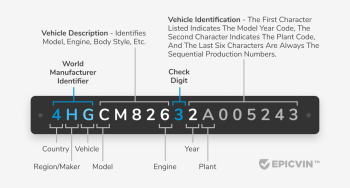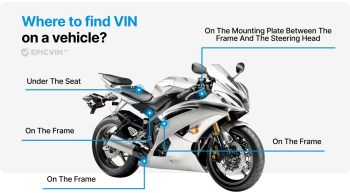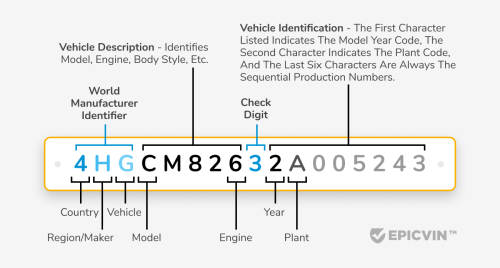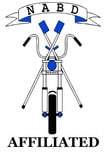| | Biker News - Regularly updated
Category: Motorcycles
-
- The brands aim with its presence at EICMA 2022 is to consolidate its good progress on the international market, since it is already present in Spain, Germany, Portugal and the United Arab Emirates.
- URBET ELECTRIC MOTORS will be joined in Milan by LORA S as its main attraction, its flagship model thanks to its 360 km range and its 24 HP power.
- URBET will also unveil a new model called GRAN VIA, a new electric maxiscooter focused on satisfying the needs of a growing demand.
URBET will attend the most important motor show for the two-wheel sector in Europe, the EICMA, an event which will take place between the 8th and the 13th of November. The brand will have an exclusive and attractive stand which can be found at the T84E location in Hall 24.
The aim of URBET ELECTRIC MOTORS with its presence at EICMA is to continue its international expansion strategy and therefor strengthen its presence in key markets. The Marbella-based company is already present in the Spanish market through more than 20 authorised dealers, as well as in Germany, Portugal and the United Arab Emirates. Soon, URBET will start its activity in Italy thanks to a new partner.
This will also be the first time the company shows LORA S in an international exhibition. Thanks to its 360 km range, its 24 HP of maximum power and a naked design with neo-retro lines, the model will help to project the URBET ELECTRIC MOTORS brand in a stronger way in the different european markets.
URBET ELECTRIC MOTORS wants to demonstrate its ambition for growth and commitment with the customer, and for this reason it does not only restrict itself commercially to the markets where it has an official presence, but also will deliver any model to any country within the European framework, offering personalised attention.
URBET ELECTRIC MOTORS model range
The URBET range starts in Spain at 2,200 euros* for its most economical model, RIAZOR, an affordable moped based on the concept of a flat-floor urban scooter. EGO is the brand's second electric moped. With a more radical image, it does not follow design concepts, and starts at 3,900 euros*.
GADIRO is the brand's best-seller. A 125 C.C. equivalent that offers up to 160 kilometres of autonomy in its dual battery version. It is one of the most affordable 125 electric bikes in Europe, starting at 3,500 euros*.
LORA is the maximum expression of technology and power within the URBET ELECTRIC MOTORS model range. In its LORA S version, it reaches a top speed of 150 kilometres per hour thanks to its 19 kW maximum power motor (24 HP) and a range of up to 360 kilometres on a full charge of its 15.1 kWh battery. All of this is possible at the same time that is considered a 125 C.C. equivalent, as its rated power remains at 8 kW.
As URBET ELECTRIC MOTORS announced previously, LORA and LORA S will reach the streets of Europe during the last stages of this year.
URBET GRAN VIA, the new electric maxiscooter for those looking for more in every way
In order to continue to meet the requirements of a growing demand, URBET ELECTRIC MOTORS will add a new electric maxiscooter to its model range that aims to satisfy those who need a scooter with bigger dimensions and better performance than a traditional urban scooter.
The new model owes its name to the most famous streets in Madrid and Barcelona, Calle Gran Vía. Will be positioned between Gadiro and Lora in terms of performance. It will reach up to 120 kilometres per hour thanks to a central electric motor with 9 kW of continuous power and 20 kW of maximum power.
URBET GRAN VIA will also have a superior range to the needs of the average user on the daily basis, since with a full charge of its 7.56 kWh battery (72 V, 105 Ah), it will be able to complete journeys of more than 130 kilometres between charges.
In the coming weeks, URBET will announce GRAN VIA’s launch for the European market.
URBET: E-Mission Ø
URBET: E-Mission Ø is the philosophy under which URBET ELECTRIC MOTORS works, in which the electric vehicle is the basis on which healthier and more efficient cities must be created.
Santiago Díaz- Pache comments on the brand's mission: "URBET aims to be a protagonist in this transformation, we want not only to drive cleanly, which we already do, but also to extend our technology so that we do not emit CO2 when we charge our vehicles.”
“Our innovation department is working in this direction. Zero-emission driving and charging. We believe that the electric vehicle is the basis on which to create healthier and more efficient cities.”
URBET's goal with the international launch of LORA is to establish itself in the European market, something that GADIRO has already helped with, and which they hope to complete with LORA: "URBET is experiencing a moment of expansion of the brand both nationally and internationally. The Lora model also aims to introduce us more forcefully into the European market, something that is already being achieved in cities such as Paris, Berlin, Brussels and Stockholm," concludes Díaz-Pache.
*Prices may vary depending on the country.
Sobre URBET
Urbet Electric Motors is a Spanish electric mobility brand founded in 2017 in the city of Marbella and already has 20 official distributors in Spain. Its range is made up of four models, including the Urbet Gadiro E125, one of the most popular models on the Spanish market in its niche thanks to a price/range ratio that is currently unrivalled. In the future, the Andalusian company aims to set up production in Málaga.
article supplied
-
When a bike is first purchased, it will be registered with the Department of motor vehicles (DMV). One of the requirements for registration is a vehicle identification number. 
Just like a car, a motorcycle, dirt bike, or ATV also comes with a 17-digit VIN consisting of letters and numbers. A bike with less than 17 digits VIN would have been built before 1981, a time when car and motorcycle manufacturers were allowed to use whatever string of numbers they deemed fit as the VIN of their vehicles.
The VIN of a bike tells you the story of the motorcycle. By examining a motorcycle's VIN, you can get information on the manufacturer of the bike, the model, year, and history of the motorbike.
A motorcycle VIN provides all the relevant information about the bike since it was manufactured. This post will show you how to look up the VIN of a motorcycle.
Benefits of a VIN
A vehicle identification number has been a helpful tool in finding stolen vehicles. If your motorcycle is stolen, the vehicle Identification number on it will make it harder for the thief to sell it.
As soon as you report the theft, the police will link that theft report to the motorcycle's history through the VIN, thus alerting the police to be on the lookout while warning off innocent potential buyers of the stolen bike.
Furthermore, a VIN informs prospective buyers of previous titles under which the motorcycle has been held.
If the bike has been involved in an accident or was previously damaged, the VIN will show a record of this as long as the owner reported the incident.
VIN also helps in reducing uncertainty when buying parts for your motorcycle. If you do not know the correct parts to use, you can look up the motorcycle’s details with a free online VIN lookup tool. This VIN will show the details of the bike so that you can buy the right parts for it.
Some sellers will sell you a piece of worthless scrap with a fault. They will package it off to conceal its flaws until you make payment and take your purchase home to discover that you bought a bad motorcycle.
In order to prevent the frustration of losing money, it is best to use a free motorcycle VIN check service on the spot before you think of paying for a motorcycle.
A motorcycle’s VIN will tell you the history of the bike, where it has been, what it has been used for, what it used to look like, who it has been with, and how long it has been used.
A VIN check tool is the first tool to arm yourself with when you want to buy a used motorcycle. If you fail to run a VIN check first, you may spend the rest of the bike’s lifespan trying to fix it, or worse, you could end up with a criminal charge of facilitating theft if the motorcycle turns out to have been stolen.
Where to find the VIN on a motorcycle 
Motorcycle manufacturers place the VIN on different parts of the bike. Some are kept in plain sight, while some are hidden.
Check the frame under the shifter if you have trouble finding the VIN on your motorbike. Also, check around the plastic hood and the left side of the frame beside the engine. Look at the frame under the tail section. Check around the neck of the steering, inside the wheels, or by the radiator. These are some spots where you can find a VIN on a motorcycle.
How to decode a motorcycle VIN
A vehicle’s VIN may seem like a jumble of numbers and alphabets, but it is no ordinary mix of numbers. It is a unique set of numbers that can only belong to one vehicle at a time.
The VIN of any vehicle is made up of the numbers one to nine and the alphabets A to Z. The only alphabets missing are O, Q, and I, because they can be mistaken for other digits.
A motorcycle’s VIN is divided into three parts. The first segment of the VIN, consisting of three characters, contains information on the manufacturer’s identity.
The next segment contains information about the motorcycle itself. This section is made up of five characters that describe the motorcycle's components. This part talks about the engine, motorcycle model, engine type, and any other information the manufacturer wants to represent.
The third section contains the motorcycle's security code or serial number.
If you want to buy a motorcycle, you can look up the VIN using EpicVin. This VIN lookup tool is a free online service that will help you check the VIN on your motorcycle for free.
Visit the EpicVin website and look up any VIN. On the site, input the VIN in the search query and initiate a search. You will receive a report of the car's history in less than a minute.
Don’t take a bad deal
Whether buying a new bike, or a pre-owned one, you should first check the VIN. A seller can package an already used, damaged, or stolen bike to be sold at a high price.
Don’t take the salesperson's word for it. Do your research. If you find that the VIN on the body of the motorcycle is different from the VIN on the paperwork, this is a sign that the seller may have something else up their sleeves.

article supplied
-
For many, college is one of the most exciting periods of one’s life. Constantly meeting new people, encountering new ways of thinking, perhaps moving to a new city or even country. The pace of life during this period is famous for being fast, dynamic, and action-packed. With this in mind, it’s no surprise that when it comes time to review options for personal transport that many students are drawn to the idea of purchasing a motorcycle.
Motorcycles are famous for their speed, agility, and style, and can make the perfect companion for a student’s college years. But, like with any big purchasing decision, there’s plenty to consider before handing over any cheque. When it comes to owning a motorcycle, there are many pros and cons to consider. One of the main points worthy of consideration in the process and cost of obtaining motorcycle insurance - something that most students will be dealing with for the first time. To help with such an important step in the motorcycle buying process, we’ve put together a quick and helpful guide to thinking over purchasing a motorcycle and obtaining the best student insurance for your college years! 
Prepping for the purchase
While the specific cost of motorcycle insurance will always vary according to the specifications of the driver and vehicle involved, as well as the legislation of the state in which they’re registering, all insurance comes with a price tag. Many students wondering how much is motorcycle insurance will first have to address their finances before deciding what kind of insurance policy to take out.
Some students may fear that with all the homework and assignments, their busy college schedules may prevent them from working or saving enough to afford the cost of owning a bike. But, if prepared for in advance, it’s more than possible to put aside adequate funds without any detriment to your studies. Using online services that offer assignment help is a great way to uphold high standards of academic work while freeing up time to help work or save. To make use of these time-saving measures, you can get help from Edubirdie and cut down on the hours you spend at the writing desk. Balancing the time you spend doing assignments and working means that you can comfortably ride to class on the back of your dream bike with peace of mind!
Pros of owning a motorcycle
- Price: Motorcycles can thankfully be bought at very inexpensive price points, and generally don’t cost that much to upkeep. Buying second hand or refurbished models can drive costs down even further, far below the price tag that one would find if searching to buy a car. What’s more, bikes tend to squeeze out a much more efficient mileage than other types of vehicles, up to 60mpg for smaller models!
- Dynamism: Bikes are, of course, much smaller and more agile than a car, making them a great choice for university students who have to navigate the often narrow streets of college towns in the UK. The nightmare of searching and often paying for parking becomes a thing of the past with a motorcycle, as their small frames mean you can park almost anywhere.
- Lifespan: Owing to their low cost, buying a cheap second-hand motorcycle can be an investment for your student years that doesn’t need to drag on afterwards. Many students opt to spend relatively little on a starter bike for their student years and then decide afterwards whether or not to upgrade.
Bike insurance requirements
Before considering motorcycle insurance costs, it’s important to research what the specific requirements your area may impose when it comes to being insured. Most places will require drivers to purchase liability insurance, which is used to pay out damage or injury costs that may be inflicted on other drivers and vehicles.
On top of basic liability insurance, some places will also require drivers to have certain insurance additions that cover third party damage or medical expenses. As this varies greatly from place to place, it’s important to get to grips with the requirements specific to your local legislation.
Types of insurance
Most insurance companies will offer drivers the chance to tailor-make their insurance policy to their specific needs. Driving insurance often refers to the basic liability coverage that pays out any damage a driver incurs on others, and collision insurance - meaning coverage for damage incurred as part of a road accident.
Comprehensive insurance is a broader policy that also offers coverage for damages or losses as incurred off the road or through any means other than hitting another vehicle, such as damage, theft, or animal collision.
Students looking for cheap motorcycle insurance may be tempted to go for the bare minimum coverage required, but this can be a risky choice in case of major damages or medical costs. Use insurance comparison sites and ask for student quotes to see if companies offer more expansive coverage within your price range.
Tip: Student discounts!
Many insurance companies will offer specially tailored policy plans to students that come at a discounted price.
Keeping all this in mind, you can begin your research into buying your student motorcycle and the right insurance for you. In no time, you too can safely enjoy the thrill of riding up to class in full-throttle style!
article supplied
-
In a world of increasing interest rates Suzuki is offering customers the chance to fix for up to four years at just 4.9% APR representative, on either a PCP or HP agreement and with no deposit required.
Available on the range-topping Hayabusa – with its famed 1340cc, torque-laden inline four cylinder engine and electronics suite than includes traction control, launch control, cruise control, cornering ABS, and a bi-directional quickshifter – the V-Strom 650XT middleweight adventure machine, and the bike of the people; the SV650 and its café racer sibling, the SV650X.
The SV650, the bike that spawned the middleweight twins category, with no deposit and on a four-year PCP deal, can be had for just £107.87 per month. At the other end of the spectrum, the third generation Hayabusa can be ridden for £149.00per month over the same period, with a £3,626.88 deposit or trade-in.
Suzuki GB head of motorcycles, Jonathan Martin, said, “We’re acutely aware of the fact that there are challenges being faced at the moment, so, to help our customers we’re providing the opportunity to fix their interest rate for up to four years. The result is a known monthly repayment that’s not going to change, providing certainty and stability. And at 4.9% APR it helps keep those repayments low and manageable, and means you can put a new Suzuki in the garage for less.”
The offer runs until 31 December, 2022.
-
FTR lineup adds fresh, vibrant colours, while New FTR Sport, FTR Rally & FTR R Carbon upgrade to 101 mm Round Touchscreen Display with Navigation*
Indian Challenger Elite delivers the ultimate in style & exclusivity; new sapphire blue smoke paint with Black Smoke & Titanium Metallic Smoke combine premium quality with head-turning style
From Scout to Indian Pursuit, the 2023 lineup offers models & styles for any rider; new Indian Motorcycle accessories further expand personalisation options
Indian Motorcycle, America’s First Motorcycle Company, today announced its 2023 model year lineup, featuring the new FTR Sport and Indian Challenger Elite, along with various model updates and new accessories across the line. In addition, the 2023 lineup features a variety of new colour options, highlighted by vibrant colour schemes for FTR and FTR Sport on newly designed tank covers.
“Fully loaded with models and styles for the widest range of riders, the 2023 lineup is a powerful testament to our team’s relentless effort to build and refine a truly comprehensive product offering over the past nine years,” said Mike Dougherty, President for Indian Motorcycle. “This effort has been focused across the line and within each model lineup, as evidenced by the introduction of the FTR Sport – the addition of which creates four unique FTR offerings, each with its own style and personality.”
FTR: An American Original
Headlining the 2023 model year news is the introduction of a new FTR mid-range trim, the FTR Sport. Replacing FTR S, the FTR Sport sits just below the premium FTR R Carbon, but above the FTR and FTR Rally – creating four distinct trim models for riders to choose from.
Designed for riders to cut loose and enjoy the pure sport of motorcycling, the FTR Sport’s bold aesthetics and sporty componentry, including a number plate, chin fairing and seat cowl, take the FTR’s energetic attitude to another level. The FTR Sport touts a new tank panel design and is available in Black Metallic with Indy Red accents or White Lightning with Indy Red and Black Metallic accents. A totally unique take on American V-twin performance with an unmistakable, muscular style, the FTR truly is an American original.
New for 2023, the FTR Sport, FTR Rally and FTR R Carbon are upgraded with a 101 mm round touchscreen display powered by RIDE COMMAND, featuring navigation*. Three ride modes (Sport, Standard, Rain) provide unique performance experiences for varying preferences and riding conditions, while Lean Angle Sensitive Stability Control and ABS provide confident, predictable handling in all conditions.
All four FTR models now offer a new sport exhaust muffler, and a retuned front braking system, which provides a firmer feel. Indian Motorcycle also moved the speedometer up for easier viewing and added a new clutch for improved feel and performance.
The FTR Rally features 19 and 18-inch spoked wheels wrapped with knobby tires and is available in new Black Smoke paint with Desert Earth frame and the iconic Indian Motorcycle Headdress logo emblazoned across the tank.
The FTR R Carbon separates itself as the premium offering with carbon fibre components, premium seat, fully adjustable Öhlins gold front forks and a gold piggyback shock. The iconic Indian Script logo tank panels are exclusive to the FTR R Carbon, which is finished with classy Cloud Silver and Championship Gold pinstriping.
While primary componentry carries over for the entry FTR, the new tank panel design, as seen on FTR Sport, and the addition of bold, vibrant colours, the refreshed FTR further broadens the appeal of the FTR lineup to more riders. The entry FTR is available in Metallic Black, contrasted by Lifted Lime branding with matching rear shock, or Stealth Gray, featuring Orange Burst branding, rear shock and wheels.
For added personalization, Indian Motorcycle is launching nine new FTR accessories. Through a brand partnership with Gilles Tooling, Indian Motorcycle is offering co-branded pieces, including Performance Adjustable Rearsets, and three Billet components: Bar End Weights, an Oil Cap and a Radiator Cap. Performance Adjustable Levers will also be available in spring 2023. In addition, Indian Motorcycle has expanded its carbon fibre offering with three new pieces, including an Exhaust Heat Shield, Frame Guard and a Sprocket Cover. To enhance comfort, Indian Motorcycle has introduced a durable and weather-resistant Comfort+ Seat, which combines comfortable ergonomics with additional padding where needed most.
Indian Challenger Elite: Ultimate in Style & Exclusivity
For riders looking for something more exclusive and elevated from the rest, Indian Motorcycle is offering the 2023 Indian Challenger Elite. With only 150 available in total and less than 50 outside of America, the limited-edition bagger makes a bold statement with its premium Sapphire Blue Smoke Paint with Black Smoke and Titanium Metallic Smoke Accents.
The perfect blend of style, performance and comfort, the Indian Challenger Elite is sure to turn heads on streets and crush miles on open highways. The PowerPlus engine touts a best-in-class 90 kW horsepower and 178 Nm of torque, and its premium amenities and advanced ride-enhancing technology deliver a ride experience that’s second-to-none. Indian Challenger Elite’s long list of premium features include the following: three selectable ride modes, electronically adjustable rear suspension preload from Fox®, Smart Lean Technology, an adaptive LED Headlight, LED driving lights, an adjustable flare windscreen, Select floorboards, heated grips, 165 mm Powerband Audio with Saddlebag Speakers, and a new Precision Cut five-spoke wheel. All-in, whether riding two-up for a weekend adventure or commuting solo, the Indian Challenger Elite delivers the ultimate in style and exclusivity.
2023 LINEUP: A Diverse Range for Any Rider
Touting a wider range of models and options than ever before, the 2023 Indian Motorcycle line offers a model suited for any rider and a host of new upgrades, including:
• All Thunderstroke and PowerPlus models receive a new clutch – improving the overall feel and forgiveness. This new slipper clutch reduces engine drag which provides a smoother down shifting experience and comfortable ride while improving your ability to maintain traction when facing poor road conditions. Lastly, the larger friction zone and decreased lever effort reduces your clutch fatigue, which can be beneficial in urban areas or when riding in traffic.
• Indian Springfield, Chieftain, Indian Challenger, Roadmaster and Indian Pursuit models feature a redesigned LED headlight, which improves reach and spread of light – helping the rider see what lies ahead, while also improving their visibility to other motorists on the road.
• Integrated buttons on the Heated Seats and Heated and Cooled Seats for PowerPlus and heavyweight Thunderstroke models now feature haptics, which allow riders to feel the button’s responsive when wearing gloves.
• Indian Pursuit Premium Package** models now offer Lower Fairing Storage compartments as standard.
Across the line, Indian Motorcycle has introduced an array of new paint colours for international markets, including Sagebrush Smoke for Chief Dark Horse plus Stryker Red Metallic on Roadmaster Limited and Indian Pursuit Dark Horse. Bronze Pearl Metallic is a new colour option on Roadmaster Limited and Indian Springfield models, while Titanium Smoke is introduced to Indian Challenger Dark Horse. For a comprehensive view of the lineup’s new paint options, please visit IndianMotorcycle.media.
For 2023, Indian Motorcycle is introducing an array of functional accessories. First, in partnership with CruzTOOLS®, Indian Motorcycle is launching three accessories, including two tool kits compatible with all models and an axle adapter for FTR models. To add storage to most models, a new All-Weather Vinyl Tail Bag attaches to select passenger seats or luggage racks. In addition, a new Syndicate Heated Seat is available for Indian Challenger models, while a Reduced Reach Kickstand is now available for all Indian Challenger and Indian Pursuit models.
For the Chief line, Indian Motorcycle is launching two new bag options. The Chief Fork Bag attaches securely to the front of the handlebars and is perfect for storing smaller items like gloves, glasses, cell phones or water bottles. The new Chief Bobber Saddlebags are water-resistant and add convenient storage without sacrificing style.
For added comfort, Indian Motorcycle is offering Chief riders an upgraded Comfort+ Solo Seat and a two-up Syndicate Seat. The Comfort+ Solo Seat pulls design inspiration from old-school muscle car interiors. The top is plusher than the stock seat and contours to hold the rider securely and comfortably. The new Chief Syndicate Seat complements the bike’s distinct design, while adding comfort and support for both rider and passenger. The Syndicate Seat is made with a durable, weather-resistant black vinyl that won’t fade.
For Chief passengers, Indian Motorcycle is introducing the Low Profile Passenger Backrest, which complements the bike’s style and adds cushioned support to the passenger’s posterior.
Lastly, the new Quick Release Low Profile Trunk is factory engineered to add exceptional style, passenger comfort, and extra storage space to Indian Motorcycle bagger and touring models, while still maintaining a streamlined look. The hinged, lockable lid lifts to the side with the assistance of a gas strut for ease of opening, as well as to stabilise the trunk while open. The trunk bottom is covered with a soft, automotive-quality liner to reduce cargo from moving while riding. The Quick Release Low Profile Trunk’s 46 litre volume easily fits two half helmets, gloves, and a jacket, and with a 10 kg cargo limit is perfect for day trips and small adventures. Quick Release technology lets riders install or remove the trunk quick and easily without tools and no mounting hardware remains on the motorcycle.
For more information on Indian Motorcycle visit IndianMotorcycle.eu and follow along on Facebook, Twitter and Instagram.
|







